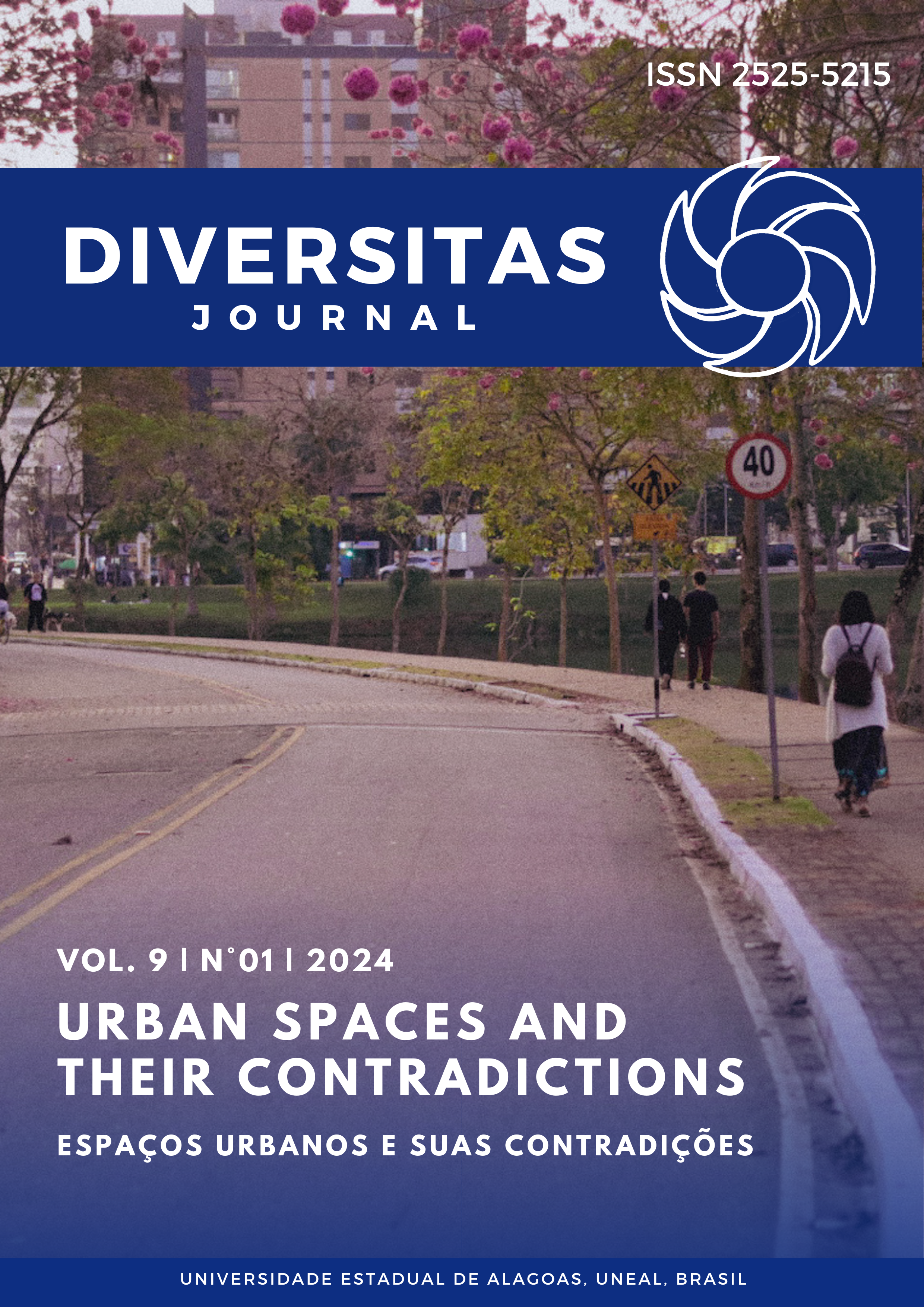Water Footprint of the vegetable garden Project at School
An InclusivePerspective in Environmental Science
DOI:
https://doi.org/10.48017/dj.v9i1.2466Keywords:
Water saving, Organic composting, SustainabilityAbstract
The project vegetable garden at school: an inclusive perspective in the teaching of Environmental Sciences, produced in the PROFCIAMB master's course, Campus UFPE, brings an integrative dynamic between students, employees, AEE team and teachers, having as a product a didactic sequence that intends to include the students with disabilities in the teaching of Environmental Sciences, culminating in a vegetable garden that will produce vegetables to be used in school meals; intends to expose to the educational community that it is possible to have a vegetable garden in the institution that is multidisciplinary, sustainable and economical, because through the capture of rainwater and organic composting, there will be minimal use of paid water. The school to be applied to theproject, experienced two gardens which used water from the supply system, having a high financial expense, estimating the expense of the liquid of the garden of this project with the others already carried out in the school by educational programs, we canverify that we will have a significant reduction in the use of paid water; the research has a qualitative-quantitative approach, school employees were interviewed about consumption in old gardens and with the bibliographic study we can see that you can have a sustainable product.
Metrics
References
ANEEL/ANA. (2001). Introdução ao gerenciamento de recursos hídricos.Brasília.https://www.yumpu.com/pt/document/view/39990810/introducao-ao-gerenciamento-de-recursos-hidricos-aneel
Barbosa, N. V. S., Chagas, C. M. dos S.(2009). Alimentação e nutrição: caminhos para uma vida saudável. Brasília: FNDE; MEC; FAO, (Caderno, 3).
Brasil, Secretaria de Educação Fundamental.(1998).PCN -Parâmetros Curriculares Nacionais para Ensino Fundamental.
FNDE. (2008). Horta escolar ajuda a formar crianças mais saudáveis e conscientes. http://www.fnde.gov.br/acesso-a-informacao/institucional/area-de-imprensa/noticias/item/850-horta-escolar-ajuda-a-formar-crian%EF%BF%BDasmais-saud%EF%BF%BDveis-e-conscientes.
Hoekstra, A. Y., Huang, P. Q.(2022,September). Virtual water trade: A quantification of virtual water flows between nations in relation to international crop trade.
UNESCO-IHE. v.11 p.66. http://cdm21063.contentdm.oclc.org/cdm/ref/collection/p21063coll3/id/1032
Jaques, R. C. (2005). Qualidade da água de chuva no município de Florianópolis e sua potencialidade para aproveitamento em edificações.Dissertação Mestrado em Engenharia Ambiental. Universidade Federal de Santa Catarina –SC.
Machado, F. O., Cordeiro, J. S.(2012). Aproveitamento das águas pluviais: uma proposta sustentável. http://www.hidro.ufcg.edu.br/twiki/pub/ChuvaNet/ChuvaMaterialDidatico/270.Pdf
Mauricio, J.T.(2008). Aprender brincando: O lúdico na aprendizagem. http://www.pedagogia.com.br/artigos/importanciadabrinquedoteca1/index.php?pagina=9.
Minayo, M. C. de S.(1997). Pesquisa social: teoria, método e criatividade.(7ª ed.). Vozes.
Oel, P. R. V.,Mekonnen, M. M., Hoekstra, A. Y. (2009,15 November).The external water footprint of the Netherlands: Geographically explicit quantification and impact assessment. Ecological Economics, v.69, pp.82-92.https://doi.org/10.1016/j.ecolecon.2009.07.014
Oliveira,Z. M. R. (2010). Educação Infantil fundamentos e métodos. (5ªed.). Cortez.
Romaguera, M.,Hoekstra, A. Y., Krol, M. S.,Salama, M. S.(2010,10 February).Potencialof using remote sensing techniques for global assessment of water footprint of crops. Journal Remote Sensing, v.2, pp.1177-1196.https://doi.org/10.3390/rs2041177
Tundisi, J. G.(2003). Água no século XXI -enfrentando a escassez.Rima.UnitedNations. (2020).Sustainable development goals.https://sdgs.un.org/.Waldman.M. (2013).Água no século XXI:Recurso precioso e estratégico.
Kotev.Waldman.M.(2017).Crise hídrica: a persistência do controle desagregador do Estado.
Kotev. Zhao. X.,Chen, B.,Yang.Z. F.(2009,24 January). National water footprint in an input–output framework-A case study of China 2002. Ecological Modeling, v.220, pp.245-253. https://doi.org/10.1016/j.ecolmodel.2008.09.016
Downloads
Published
How to Cite
Issue
Section
License
Copyright (c) 2024 Cicera Maria do Carmo da Silva Lira, José Macio Rodrigues Ribeiro

This work is licensed under a Creative Commons Attribution 4.0 International License.
The Diversitas Journal expresses that the articles are the sole responsibility of the Authors, who are familiar with Brazilian and international legislation.
Articles are peer-reviewed and care should be taken to warn of the possible incidence of plagiarism. However, plagiarism is an indisputable action by the authors.
The violation of copyright is a crime, provided for in article 184 of the Brazilian Penal Code: “Art. 184 Violating copyright and related rights: Penalty - detention, from 3 (three) months to 1 (one) year, or fine. § 1 If the violation consists of total or partial reproduction, for the purpose of direct or indirect profit, by any means or process, of intellectual work, interpretation, performance or phonogram, without the express authorization of the author, the performer, the producer , as the case may be, or whoever represents them: Penalty - imprisonment, from 2 (two) to 4 (four) years, and a fine. ”


















